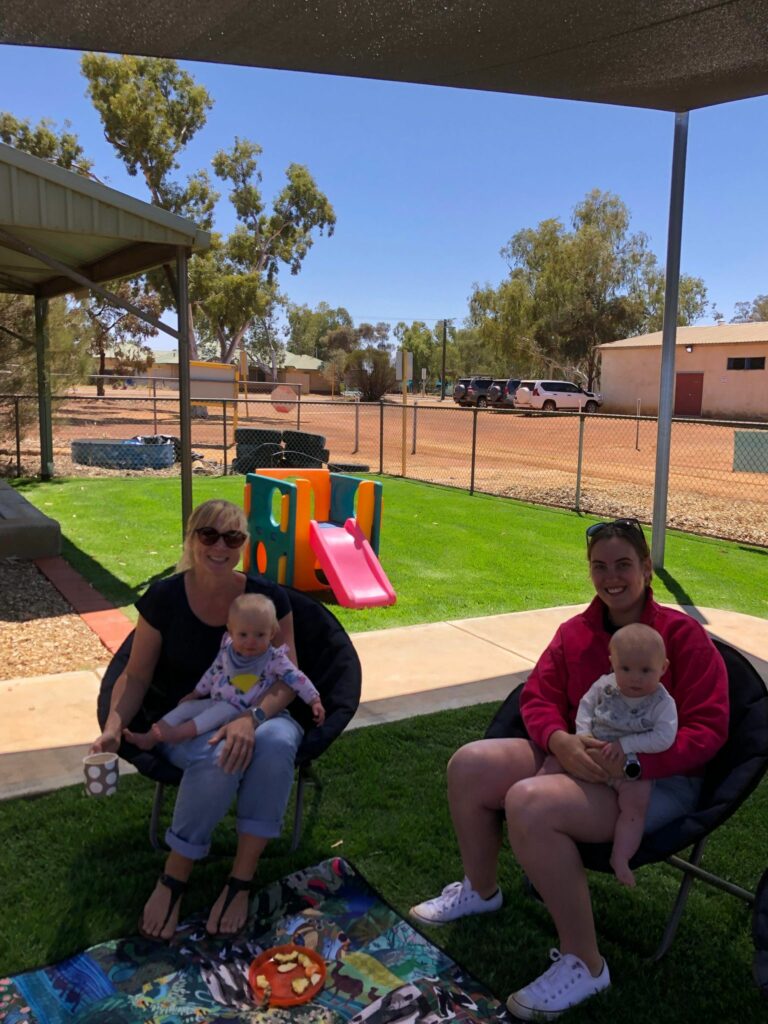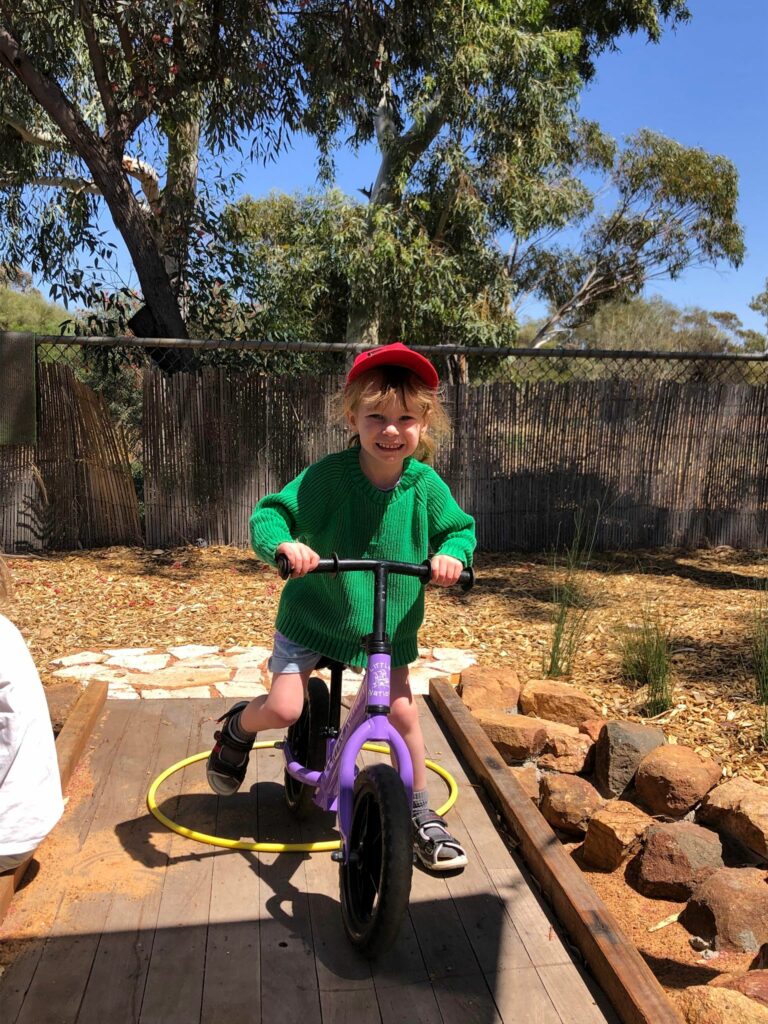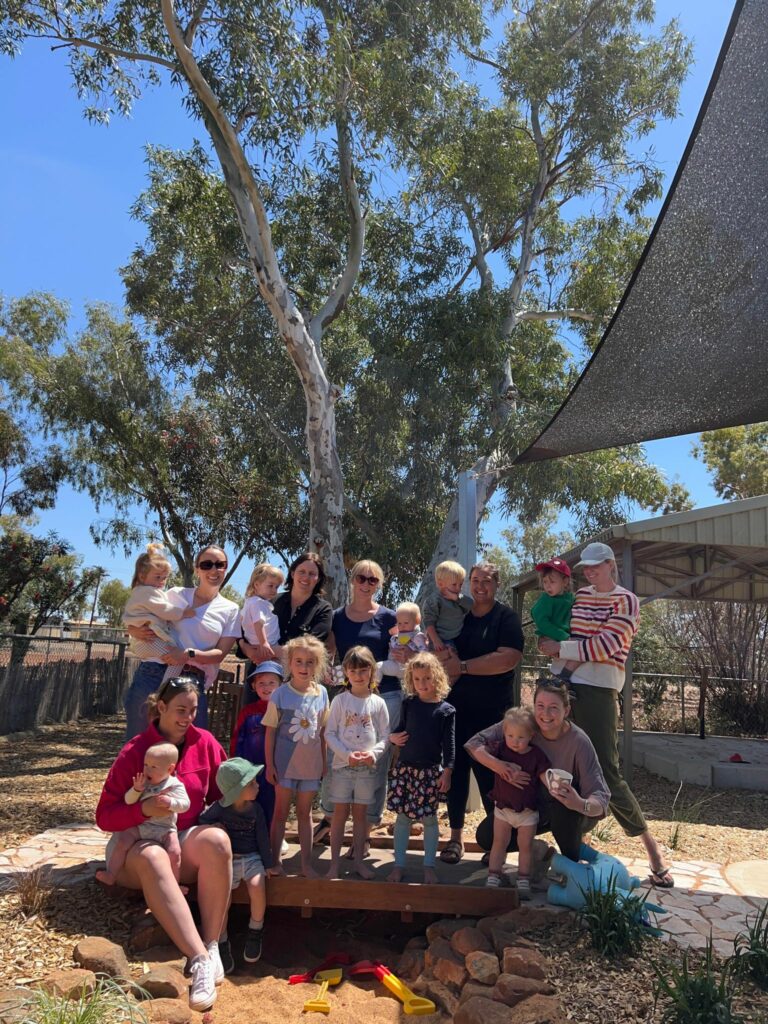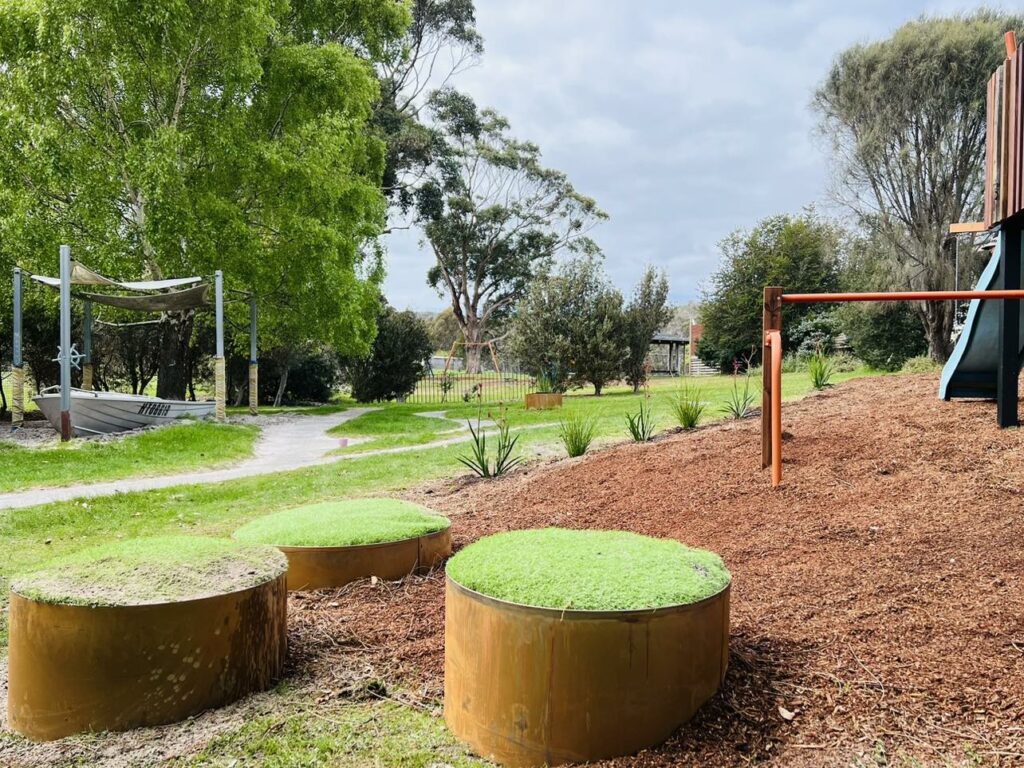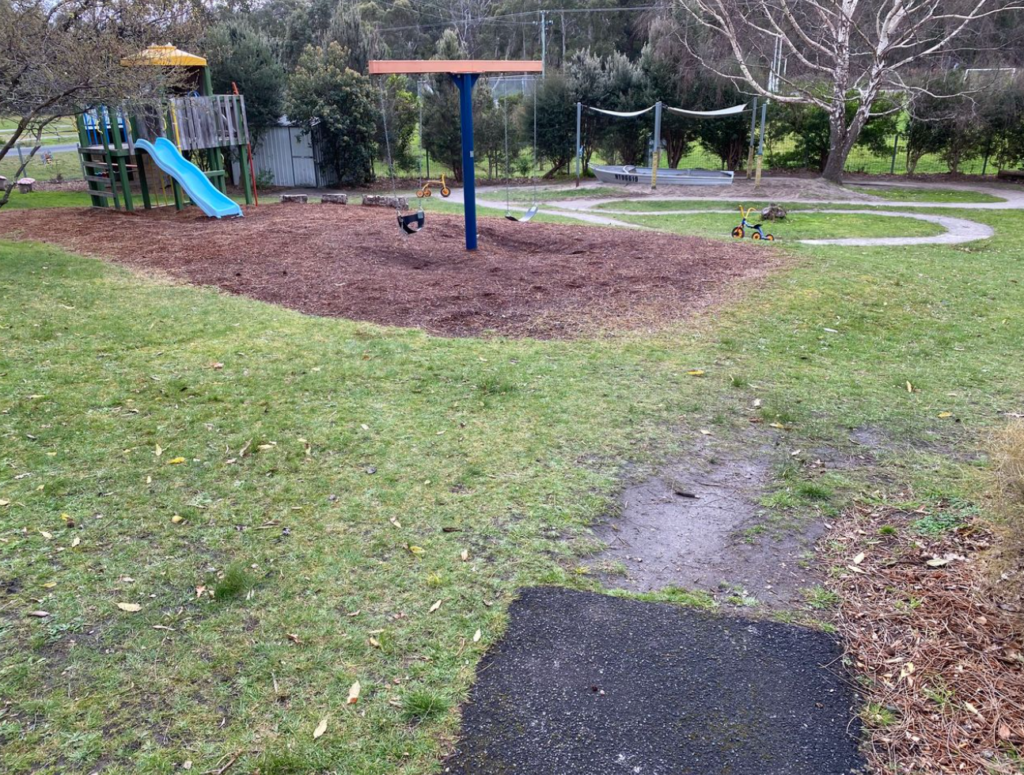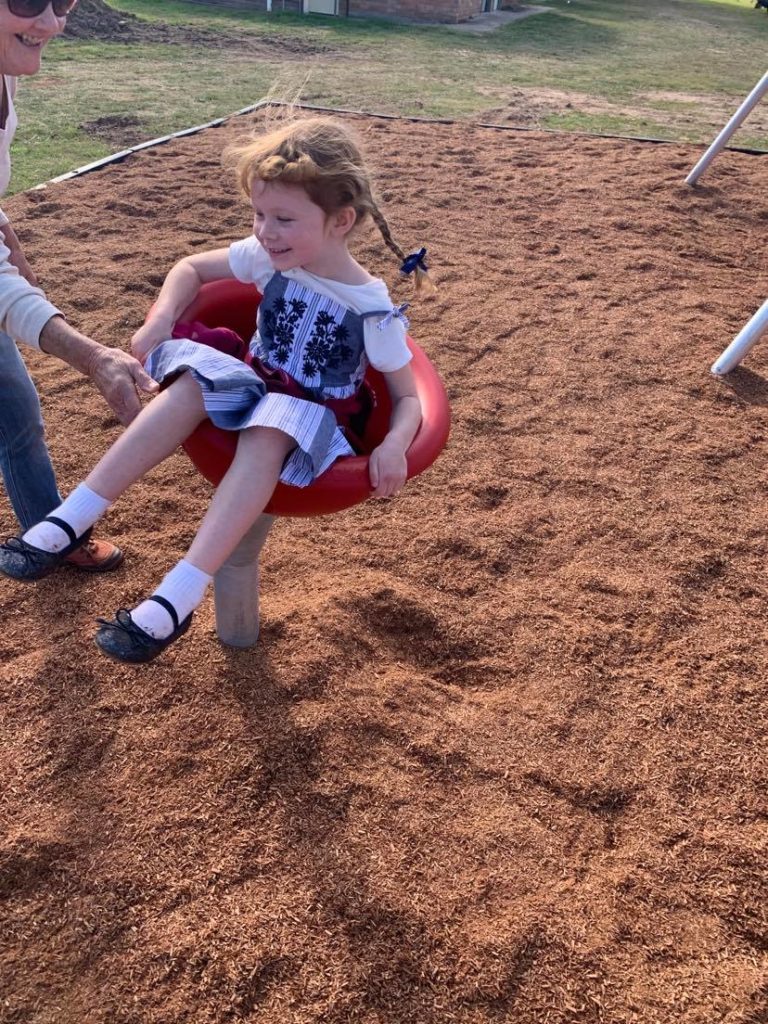Foundation for Rural & Regional Renewal (FRRR)
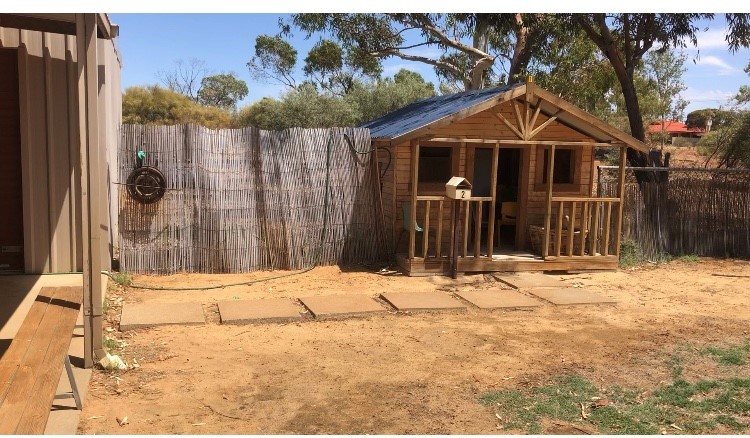 BEFORE
BEFORE
Morawa, a small town in Western Australia’s wheatbelt, lacks recreational and social opportunities for families with young children. With no cafes, the Morawa Playgroup, run for the last 40+ years, by mums (and the odd dad) serves as the primary gathering space for parents and caregivers seeking connection and support. However, Morawa Playgroup’s outdoor area was uninspiring, with a dying lawn and hard claypan soil.
Recognising the need for a vibrant outdoor space, the mums of Morawa Playgroup embarked on a project to transform their drab outdoor area into a nature playground. Collaborating with a local landscape designer, they developed a comprehensive plan to:
- Remove the old, inefficient irrigation system and replace it with a waterwise garden;
- Create a nature play space featuring sensory boxes, timber bridges, and a creek bed;
- Install shade sails to provide relief from the scorching sun and enhance the usability of the outdoor area;
- Establish seating areas for parents to connect and support each other while their children play.
The project unfolded over three years and received a boost from an FRRR grant of $9737, funded by Raine & Horne Foundation.
The completion of the project in September 2023 marked a significant milestone for Morawa Playgroup and the broader community. It’s now the only nature play space in the Shire, which spans 190km2, offering children and parents a welcoming and engaging environment. The shaded, waterwise garden has transformed the outdoor area, allowing children to play outdoors year-round and fostering a sense of connection among families.
Beyond the immediate benefits to the playgroup, the project’s impact extended to Morawa District High School, where reduced water bills freed up funds for educational resources. The positive effects of green spaces on mental wellbeing were evident at the opening of the new play space, signalling a brighter future for the community.
Despite the challenges of being a small, low socio-economic town, the project demonstrates the power of grassroots initiatives to improve quality of life. Morawa Playgroup’s success serves as a testament to the community’s resilience and determination to create a better future for its children and families.
In 2020 the Bruny Island District School Parents & Friends committee identified the need to upgrade the ‘Billabong Playground’, which caters for children up to five and their families.
Working with a local landscaper, the plan was to retain the swings, cubby house, bike path and sandpit and add an above ground timber tunnel with climbing grips over it, a small princess castle and artificial grass covered seats/jumping pods. They also intended to create a safe water play area incorporating a cauldron that fills with water and can be released via a plug. This flows into a wetland area beyond the playground fence. All this would be surrounded by plants and surfaces that stimulate sensory play.
While there were some changes along the way, the main installation and repair took place in early October 2022 and was ready for use mid-October. The work was undertaken by a local contractor, with volunteers adding plants and the artificial grass seats, as well as some timber sleeper steps in mid-October 2022.
The project was supported by a $10,000 SRC grant, thanks to the support of the Bertalli Family Foundation. However, local businesses were also asked to contribute to the project, which meant they could also install a timber shelter. The Playground is now fully functional with the 65+ students from the school and wider community being able to access it.
But the project resulted in far more than just a great play space for the children. It has strengthened the connections between the school and local businesses and the community more broadly. Additionally, the project gave a small group of volunteers the confidence to know that they can achieve great outcomes to improve their community. They displayed courage and aspiration, values that have been included in Bruny School’s values and it’s fantastic for the students to see the results they can bring, not only individuals but the entire community and future generations.
Picture this: the year is 1919 and you’re standing on the white sandy beach of Lucky Bay on the Eyre Peninsula coast in South Australia, looking up at the first beach shack to be built on the beach. The sun is warm, the water is perfect, and Lucky Bay is the idyllic holiday spot for the surrounding communities of Cowell, Kimba and Cleve.
Now in the 21st century, there are 125 beach shacks, and families from all around still come to visit the Bay!
The Lucky Bay Shack Owners Association (LBSOA) was established in 1950, and its role is to improve the environment and lifestyle of the Lucky Bay settlement for all residents and visitors to enjoy. This includes making sure the beach and local facilities are ship shape and ready to go for incoming holiday makers who are able to rent the beach shacks, as well as local fishermen and caravanners who use the facilities.
With an active role in the community, LBSOA wanted to do something that would bring some joy and a smile to the faces of the visitors to their little town. After prolonged drought, many locals were finding that holidaying with the family was simply a luxury not afforded, especially with livestock to attend to. But Lucky Bay is only 15 km north of Cowell, which makes it a perfect location for farming families to escape to, while still being able to tend to their farms.
Safe play = laughing children and happy parents
LBSOA sought funding from FRRR through the Tackling Tough Times Together (TTTT) program to support their ‘Laughter at Lucky Bay’ project, which would see a three staged plan to make the holiday destination more enticing by developing a child safe playground and surrounding facilities for parents and adults to enjoy.
Funded by the Australian Government, LBSOA received a $51,597 TTTT grant towards stage one of the plan: the purchase of new playground equipment, shade structures, soft fall sand, and fencing.
LBSOA’s President Sue Chase said they were overwhelmed by the community response, once they saw the works underway.
“What we were most astounded by is people’s enthusiasm to participate in working bees, and I think this stemmed from them seeing the playground come to life. Many people in the community provided their time to get the playground up and running. We are also proud of the funds we have raised. Our first ambition was to raise enough funds to contribute our share to the ‘Laughter at Lucky Bay’ playground project. However, we were amazed at the success of our fundraising, which, together with the other grants we received, allowed us to construct a shelter and install a BBQ shed and storage area near the playground,” she said.
The official opening of the playground in January 2021 was attended by hundreds of people who enjoyed the food stalls, jumping pillow, face painting and crab racing activities on offer.
These events not only raised vital funds to support the upkeep of the facilities, but also reinforced a real sense of community participation, lots of fun and helped people get to know one another better.
When asked what they were most proud of, LBSOA said the sheer number of children and even teenagers taking full advantage of the new playground made them so pleased. Extra facilities like a table and chairs and the BBQ have also encouraged parents and adults to spend time together and socialise, giving them a break from the ongoing pressures and stressors that drought can bring.
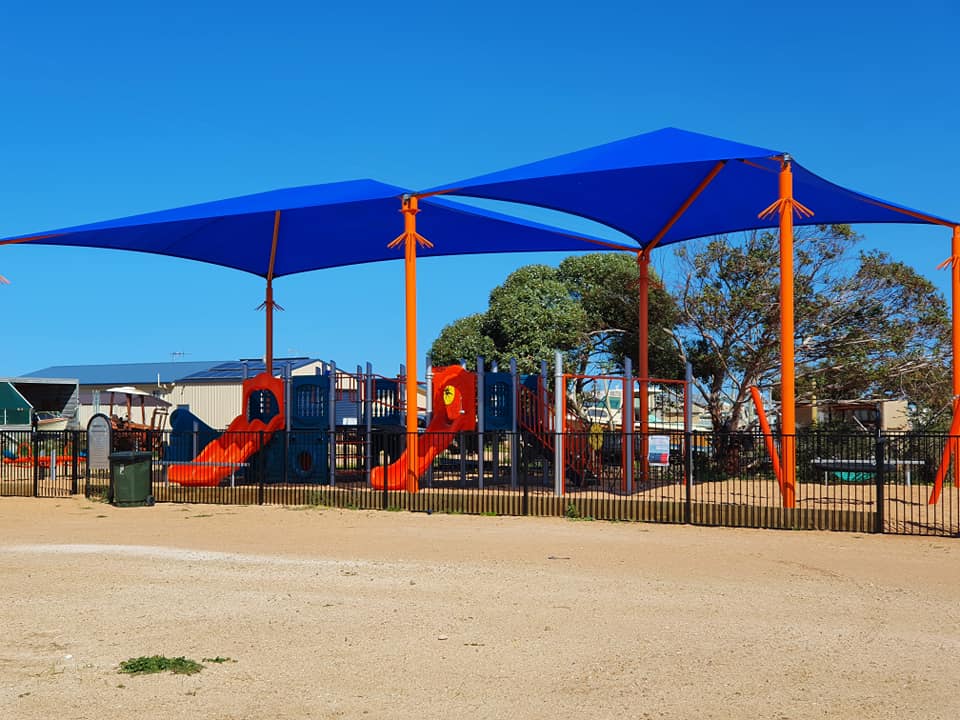
Woolomin is a rural village located in North West slopes of NSW. It’s home to just 279 residents, including many families, but there is no public playground for the children to play at.
Many young families in Woolomin have limited capacity to travel to larger centres for sport and recreation, due to the costs associated and lack of public transport. Children were increasingly using the streets to play in, and this was problematic, with the main road through the centre of town being quite busy with traffic (connecting Tamworth to popular tourist destinations including Nundle and Chaffey Dam).
It was clear that developing a safe place for children to play, and along the way helping to combat social isolation in the village, was a community priority.
Tamworth Regional Council, in partnership with the Woolomin Recreation Reserve Committee (WRRC), took on the challenge, working together to come up with a plan that would make their community stronger and more socially connected.
Consisting of 12 members, supported by an additional 10 passionate volunteers, WRRC was established in 2004 to develop Woolomin Recreation Reserve as an important hub to the Village, and they’ve since made a range of improvements for the community – the playground project was next.
The two organisations applied for FRRR’s Tackling Tough Times Together program, and were thrilled to hear that they had received a $59,000 grant, thanks to generous funding by the Australian Governement and Stockland CARE Foundation. At the time of applying, Woolomin was fully drought-declared.
With the new funding to install a playground at the local recreation reserve, they got to work, but not before consulting with those who would benefit most from the project – the local kids.
Woolomin Public School children played an integral part in designing the play area through their input into the type of equipment that would be installed. They actually started drawing up plans in mid 2018! The children’s requests were limited only by their imagination, and can be read in their letters to council here. While not every request was possible (zip lines, merry-go-rounds, monorail, a fairy floss fountain, mango trees, skate park and a Beyblade stadium were all put forward, as well as more traditional playground equipment!) it was clear that they put a lot of thought into their submissions.
One student wrote:
“In the park I would like to see a lots of trees, plants, shade shelters, seating, a bike rack and things that can help the environment.”
The final design includes components which encourage fine-motor skill play, gross-motor skill play and imaginative play as well as promoting an accessible and inclusive space for children of all abilities.
There’s nothing stopping these creative Woolomin kids from adding to the playground in the future so that it’s all they desire. For the meantime, it’s clear from their letters that it will bring important benefits.
“A park in Woolomin would make me very happy because it would give me a place to go to calm down and stuff.”
“Thank you for building in Woolomin as it will help the kids be active.”
“Thankyou if you build it. It will be so much fun and help people meet others.”
A number of visitors to the community are accessing the playground, and the local community feedback is very positive. A neighbouring land holder commented that it is “just lovely to hear the children laughing and having fun, I have seen mum reading the paper in the sun and the children on the play equipment.”
The playground has created the opportunity to draw family and community members to a central spot in their community, to spend time together, play and provide a sense of connection and wellbeing.
Well done Woolomin!

